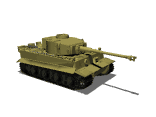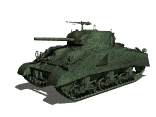|
|
|
|
| Type: |
M22 Locust |
Armament: |
37mm |
| Built: |
August 2016 |
Armor: |
12.5mm |
| Builder: |
Caleb Smith |
Rating: |
40/4 |
| Status: |
Operational |
Battles: |
2 |
| Owner: |
Caleb Smith |
Points Earned: |
2,000 |
| Call Sign: |
Unknown |
Points Given: |
1,000 |
| Notes: |
| |
3D Printed TTS Sprocket and IdlerFirst tank to battle with brushless motorsLiPo Batteries
|
|
|
|
|

Click Photo For Enlargement (80 KB)
|
|
|
|
The Light Tank (Airborne) M22 or Locust was an American-designed airmobile light tank which was produced during World War II. In September 1943, the US Army Armored Board released a critical report on the Locust, stating that it was inadequate in the areas of reliability and durability, and indicating that it would not be able to be successfully used during airborne operations. Only 830 were built by the time production ended in February 1945. Locust tanks were only used in combat once during WWII, Operation Varsity. The tanks did not perform well in the action; several were damaged during the landing process and one was knocked out by a German self-propelled gun. |
|
|
|
|
October 2015: Construction begins with the two hull sides being cut out of 1/4" ply. Both sides were pinned together to ensure symmetry. |
|
|

Click Photo For Enlargement (42 KB)
|
|
|
|

Click Photo For Enlargement (229 KB)
|
|
|
|
Skip ahead to late June 2016, and the hull is assembled, with the beginnings of the driveline being installed. To hold the shafts and give them support, two solid blocks of Oak with recessed bearings were glued and screwed in. 1/4" plywood plates were glued and nailed to the hull sides and were recessed for the other bearings. |
|
|
|
|
The drive system is constructed with a simple two-stage chain reduction, with the ratio coming to about 6.76:1. Top speed is somewhere in the whereabouts of 6mph. The surplus brushless motors were purchased from All Electronics. The motors work well enough to power the tank for general driving, but they don't have enough torque for combat. Several times during its first battle, the Locust was hit because the motors stalled instead of moving the tank. |
|
|

Click Photo For Enlargement (80 KB)
|
|
|
|

Click Photo For Enlargement (192 KB)
|
|
|
|
Starting to go mobile. Roadwheels are placed on their shafts (still need spacers behind them),and the 3D printed TTS sprocket and idler are mounted for the photo. |
|
|
|
|
Possibly the most abused part of a tank, the front was beefed up to take the beating of combat. For the front of the hull, I wanted something stronger than the 1/4" plywood that I used for the rest of the hull. So I laminated a 1/8" piece of ply on top of a 1/4" piece to get a 3/8" plate. This was then fiberglassed with 3 layers of fiberglass to increase durability. |
|
|

Click Photo For Enlargement (70 KB)
|
|
|
|

Click Photo For Enlargement (109 KB)
|
|
|
|
Track construction starts! The oak wood used for the tracks has a bit a of a story behind it. The oak boards used to be part of a granary inside an old bank-barn. My dad salvaged the wood when the barn was torn down, and it's been in storage since then. I decided this would be good choice of wood to build the tracks from since it's oak and well seasoned. |
|
|
|
|
Construction began with cutting 1/4" thick strips of wood. The strips were then cut into 2" long pads using the miter gauge on the tablesaw. Guide tooth strips were then cut and glued onto the pads as shown. |
|
|

Click Photo For Enlargement (111 KB)
|
|
|
|

Click Photo For Enlargement (118 KB)
|
|
|
|
Set the tablesaw to 22 degrees and commence to dice the strip up... |
|
|
|
|
|
|



